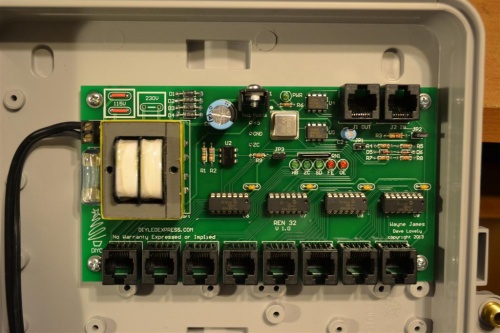Assembly Instructions For The REN 32
Disclaimers
The standard disclaimers pertaining to the information contained on this wiki page are listed here.
THIS WIKI PAGE IS NOT COMPLETE YET.
Board Assembly
- The following sequence of steps is by no means the only way to assemble the Ren32. It is simply a suggested order of events to achieve the desired goal. You can click on any photo for an enlarged view of that photo.
- NOTE: The part numbers referenced in the following instructions are those taken from the REN 32 BOM.
|
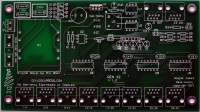 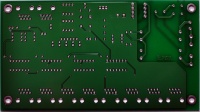
|
|
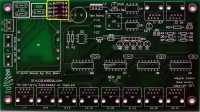
|
|
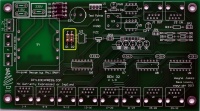
|
|
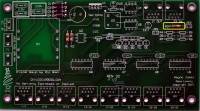
|
|
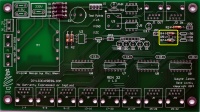
|
|
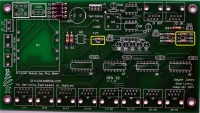
|
|
File:REN32-STEP6b.jpg |
|
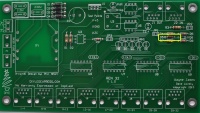
|
|
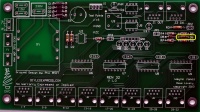
|
|
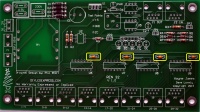
|
|
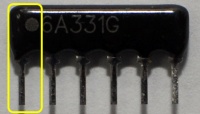
|
|
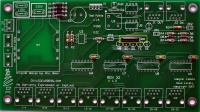
|
|
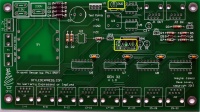
|
|
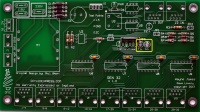
|
|
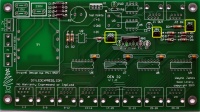
|
|
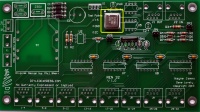
|
|
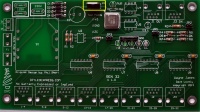
|
|
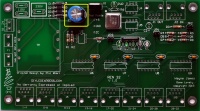
|
|
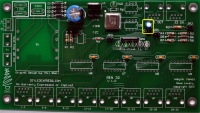
|
|
 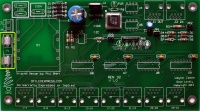
|
| |
|
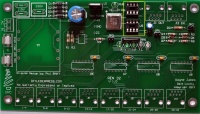
|
|
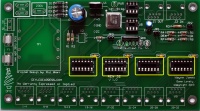
|
|
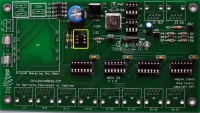
|
|
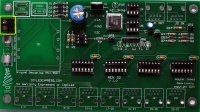
|
|
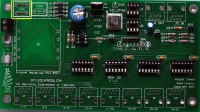 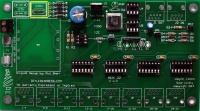
|
|
 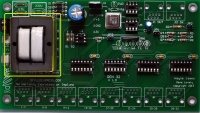
|
|
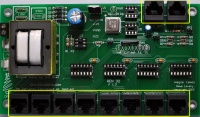
|
| |
| |
|
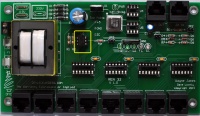
|
|
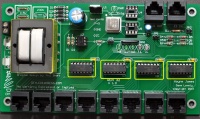
|
|
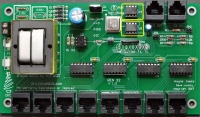
|
|
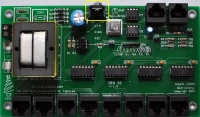
|
|
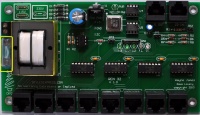
|
|
- JP1 & JP2 Configuraton
- The configuration of JP1 and JP2 depends on the type of communication being used:
- RS-232 Communication (direct connect to PC)
- JP1 installed
- JP2 not installed
- RS-232 Communication (direct connect to PC)
- Reminder: This only applies to the first Renard SS board connected to the PC. The output of a Renard SS board to the next board is RS-485.
- RS-485 Communication (output of a Renard board or output from a RS-485 adapter/converter)
- JP1 not installed
- JP2 installed (try removing if data communication issues are encountered)
- RS-485 Communication (output of a Renard board or output from a RS-485 adapter/converter)
- JP3 Configuraton
- Installed when running the Diagnostics Firmware
- Normally not installed when running the Operational Firmware. But can be left installed if you don’t mind seeing the on-board LEDs responding with the associated channels.
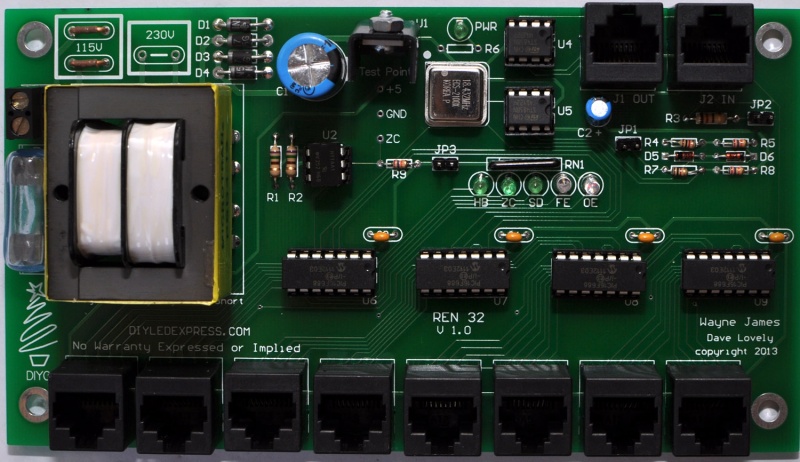
Mounting the REN 32 in an Enclosure
- The REN 32 has mounting holes that line up with the standoffs in the common enclosures like the CG-500, CG-1000 and the CG-1500.
Parts Listing (BOM)
IMPORTANT BOM INFORMATION:
Mouser part numbers are listed (unless otherwise noted) as a means of simplifying the listing. Mouser is not the only place to get these parts, they are used as the reference since they tend to have all the parts needed to complete the project. However, the parts can be procured from any electronics parts source that you prefer.
In the event that any of the following parts are not in stock at Mouser when you decide to order them, you can check the Part Substitutions wiki page and see if there any suggestions for alternative parts.
| PART NUMBER (Mouser PN# unless noted) |
QTY | REF | NOMENCLATURE |
|---|---|---|---|
| 511-LF50CV | 1 | U1 | 5 VDC Voltage Regulator |
| 532-577102B00 | 1 | Heatsink for Voltage Regulator | |
| 782-H11AA1 | 1 | U2 | Optocoupler, Bi-Directional Input |
| 815-ACH-18.432-EK | 1 | U3 | Crystal Clock Oscillator, 18.432 MHz |
| 511-ST485BN | 2 | U4, U5 | Differential Bus Transceivers |
| 571-1-390261-2 | 2 | IC Socket, 8 pin (for U4 & U5) | |
| 579-PIC16F688-I/P | 4 | U6-U9 | PIC Microcontroller |
| 571-1-390261-3 | 4 | IC Socket, 14 pin (for U6-U9) | |
| 571-1-390261-1 | 1 | IC Socket, 6 pin (for U2) | |
| 291-750-RC | 2 | R1, R2 | Resistor, Carbon Film 750 ohms 1/4W 5% |
| 291-120-RC | 1 | R3 | Resistor, Carbon Film 120 ohms 1/4W 5% |
| 299-1K-RC | 2 | R4, R7 | Resistor, Carbon Film 1K ohms 1/8W 5% |
| 299-27K-RC | 3 | R5, R8, R9 | Resistor, Carbon Film 27K ohms 1/8W 5% |
| 299-680-RC | 1 | R6 | Resistor, Carbon Film 680 ohms 1/8W 5% |
| 264-330-RC | 1 | RN1 | Resistor Network, 6 pin, 330ohms 2% |
| 625-1N5817-E3 | 4 | D1-D4 | Diode |
| 78-1N5239B | 1 | D6 | Diode, Zener 9.1V .5W |
| 78-1N5229B | 1 | D5 | Diode, Zener 4.3V .5W |
| 604-WP710A10IT | 2 | FE, OE | LED, 3mm Red |
| 604-WP710A10GT | 4 | PWR, HB, ZC, SD | LED, 3mm Green |
| 140-REA222M1CBK1320P | 1 | C1 | Radial Electrolytic Capacitor 16V 2200uF 20% |
| 140-REA470M1CBK0511P | 1 | C2 | Radial Electrolytic Capacitor 16V 47uF 20% |
| 80-C322C104K5R | 4 | C3-C6 | Capacitor, Radial Ceramic 50V 0.1uF |
| 571-7969492 | 1 | Power Terminals | Terminal Block, 2 Pos 5.08 mm |
| 571-5556416-1 | 10 | J1-J10 | Jack, Modular RJ45 PCB Mount Top Entry |
| 538-22-03-2021 | 3 | JP1-JP3 | Header, 2 Pin |
| 737-MSA-G | 3 | Shunt | |
| 504-GMA-10 | 1 | F1, F2 | Fuse, Fast Acting 10A |
| 534-3517 | 2 | Holder, Fuse Clip PCB mount 5mm | |
| 534-3527C | 1 | Cover, Fuse | |
| 838-3FD-412 | 1 | TF1 | Power Transformers 12.6VAC CT 6.0VA Dual Primary |
If you are planning on ordering from Mouser Electronics you can use this Shared Project to make it easier to order the parts.
Hardcopy Instructions
Related Links
- Board Availability Information]
